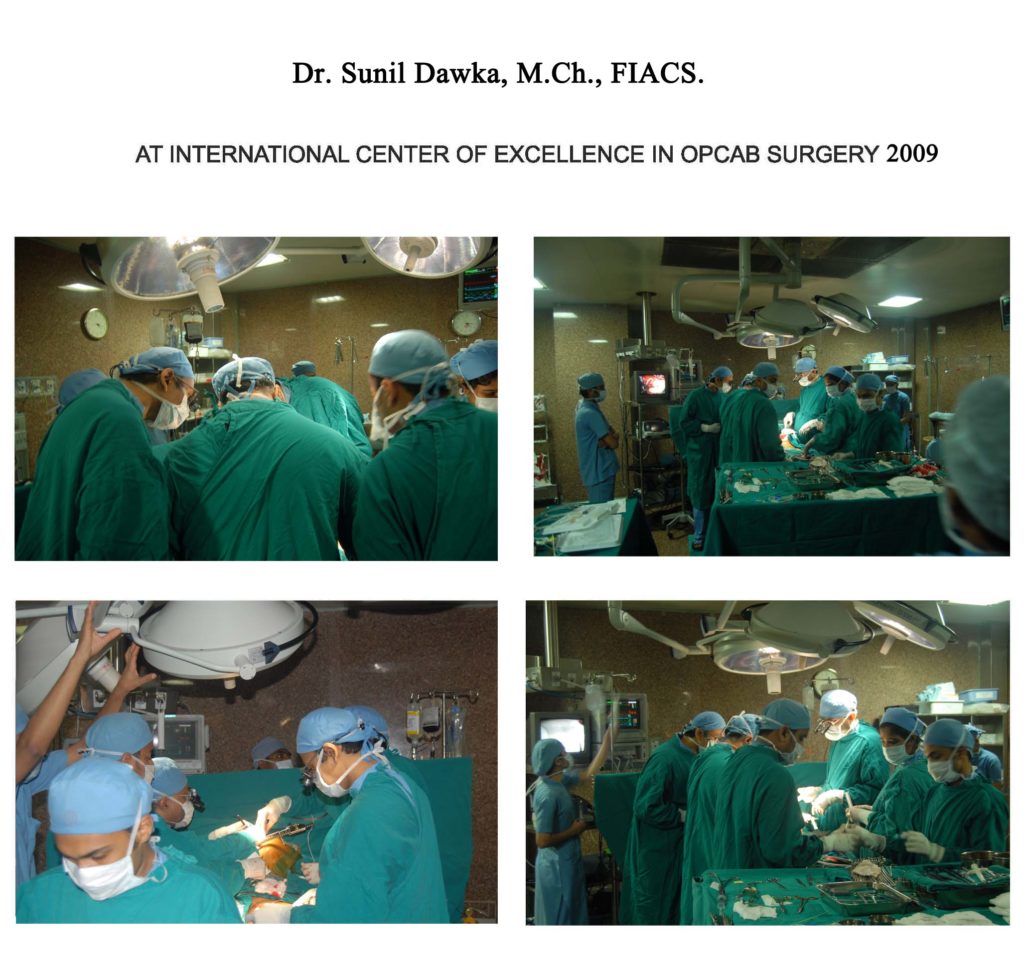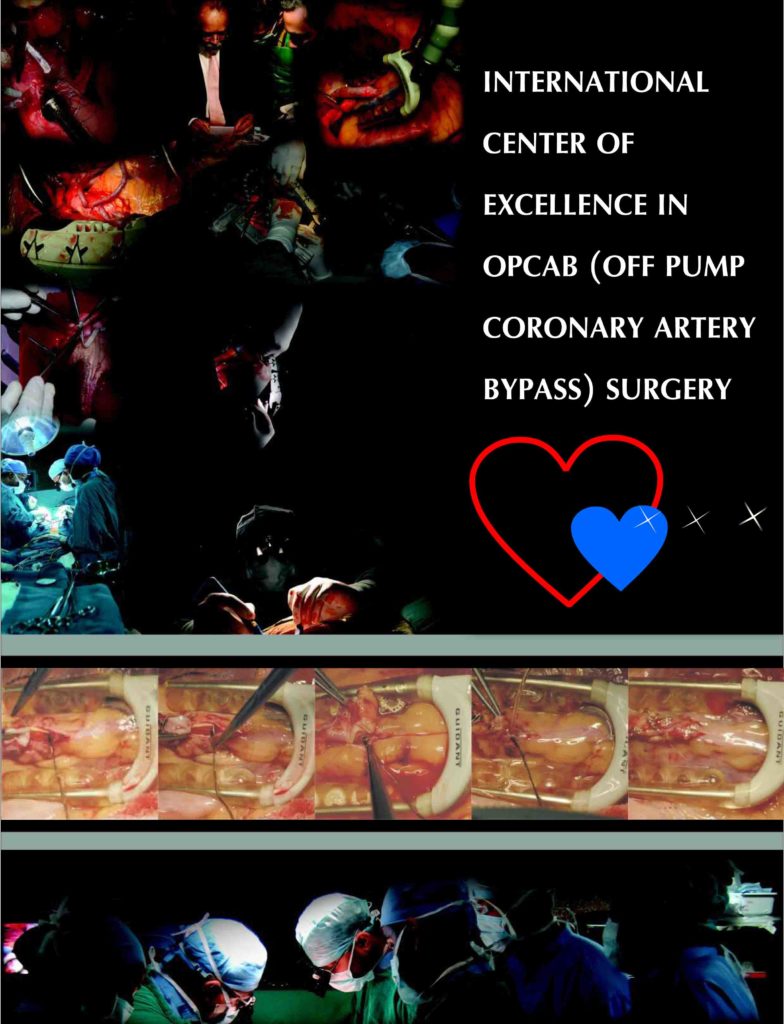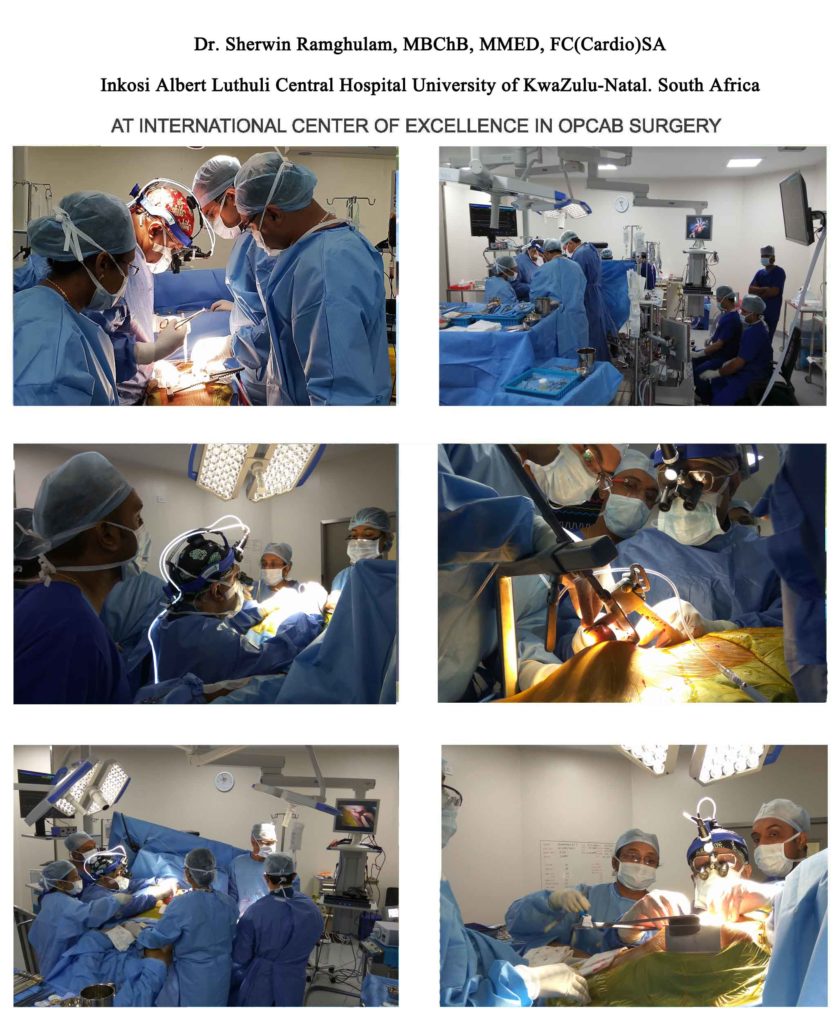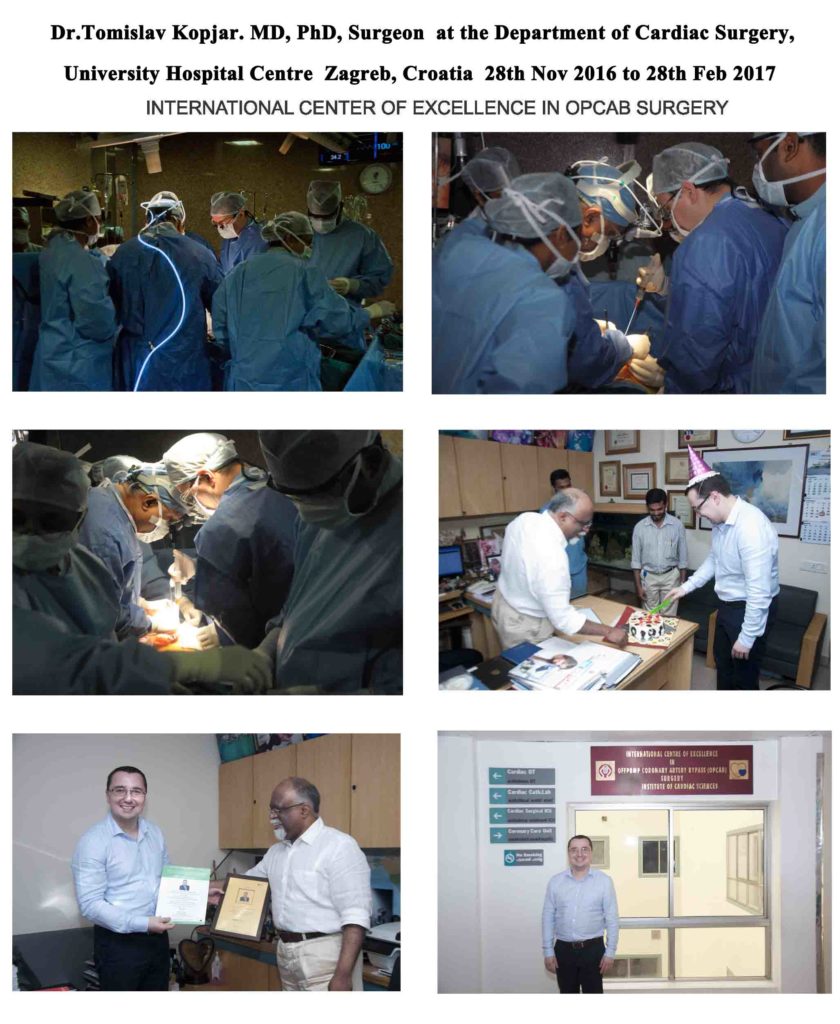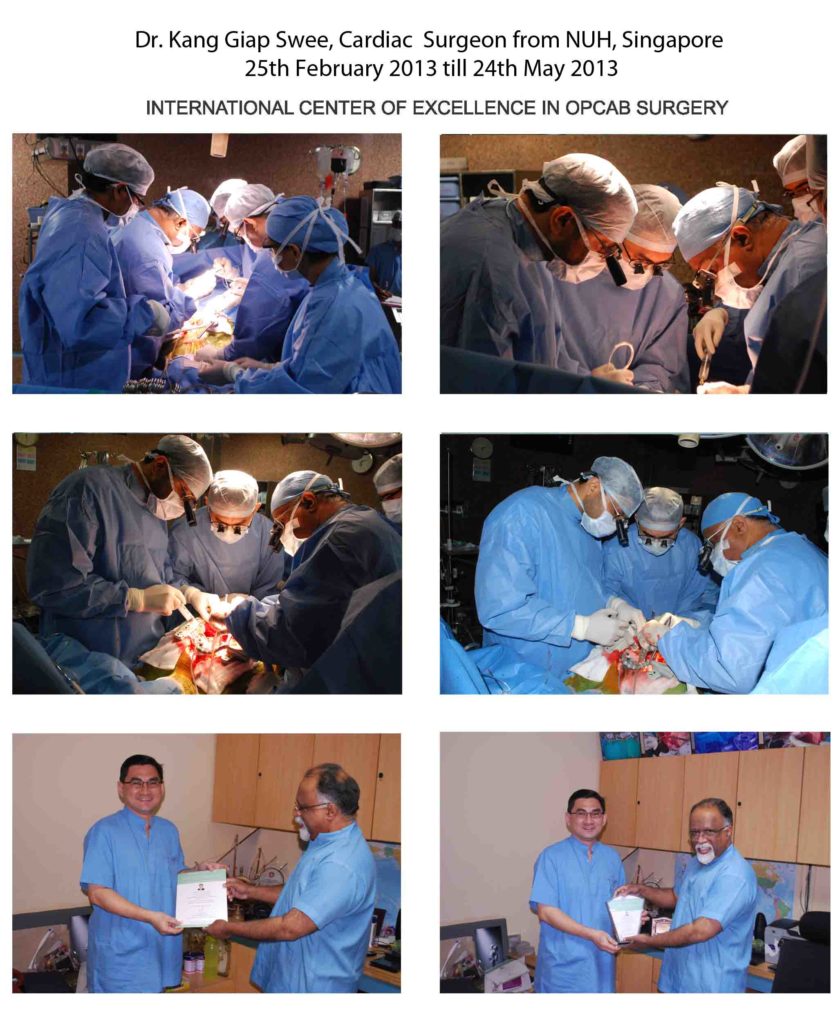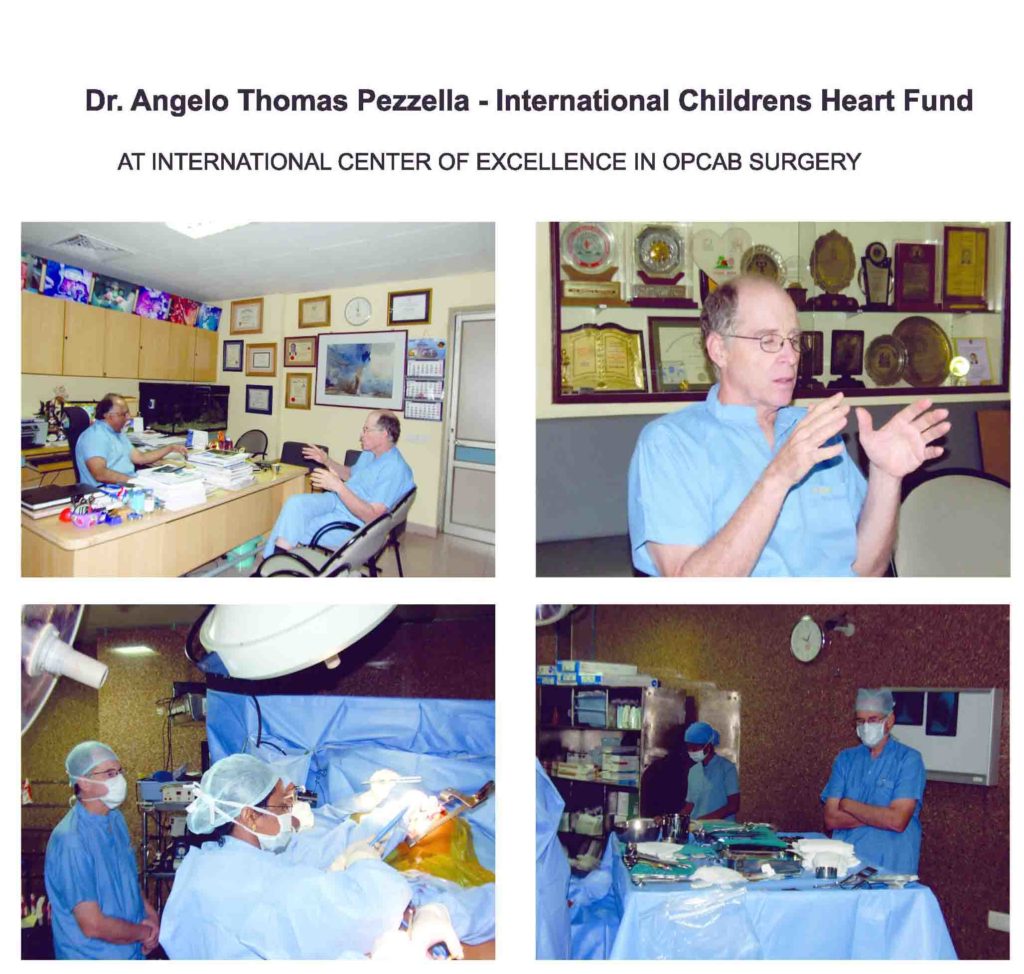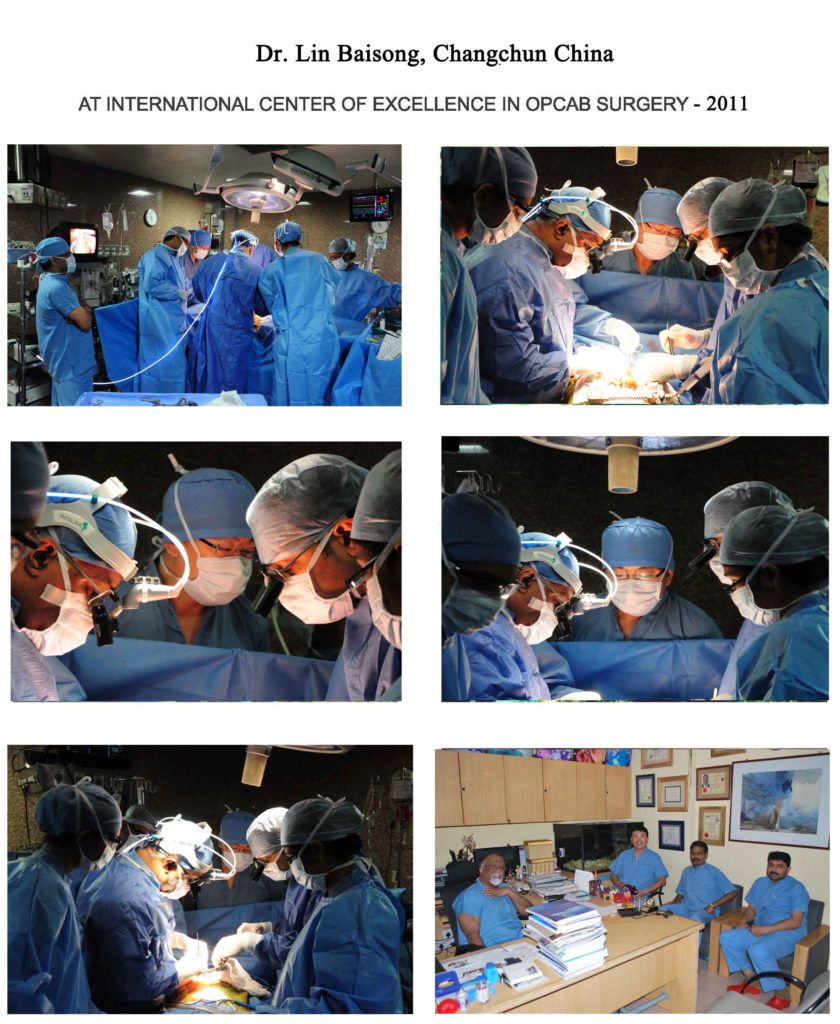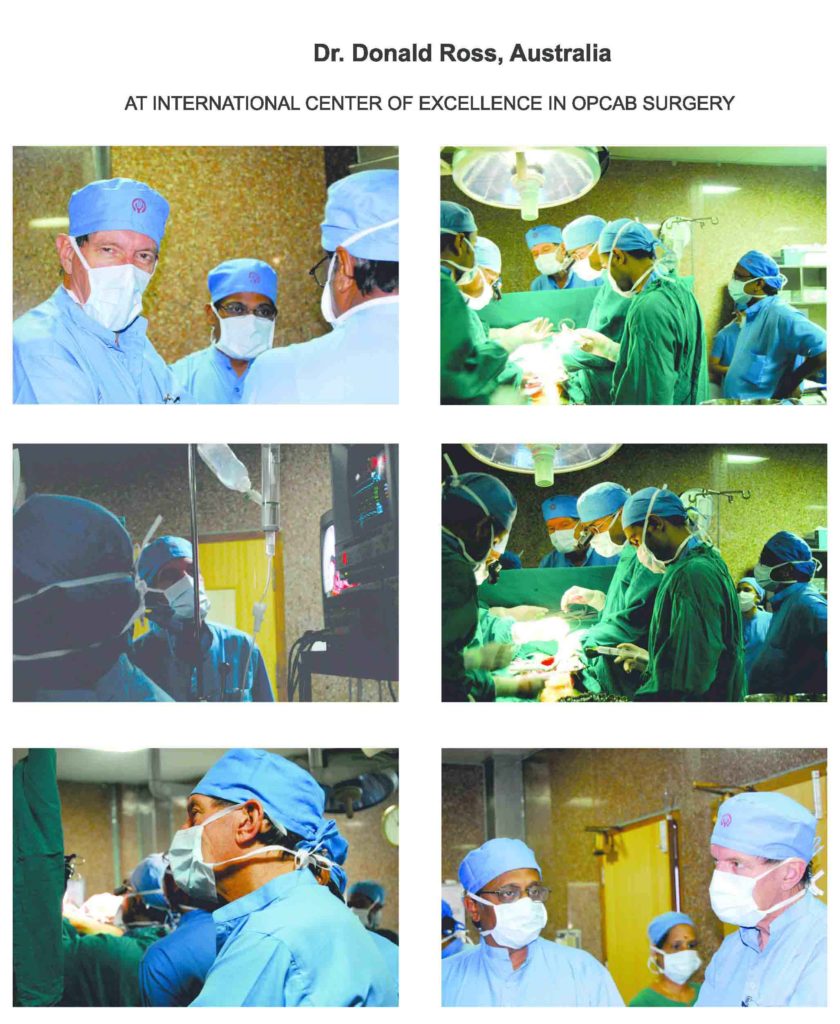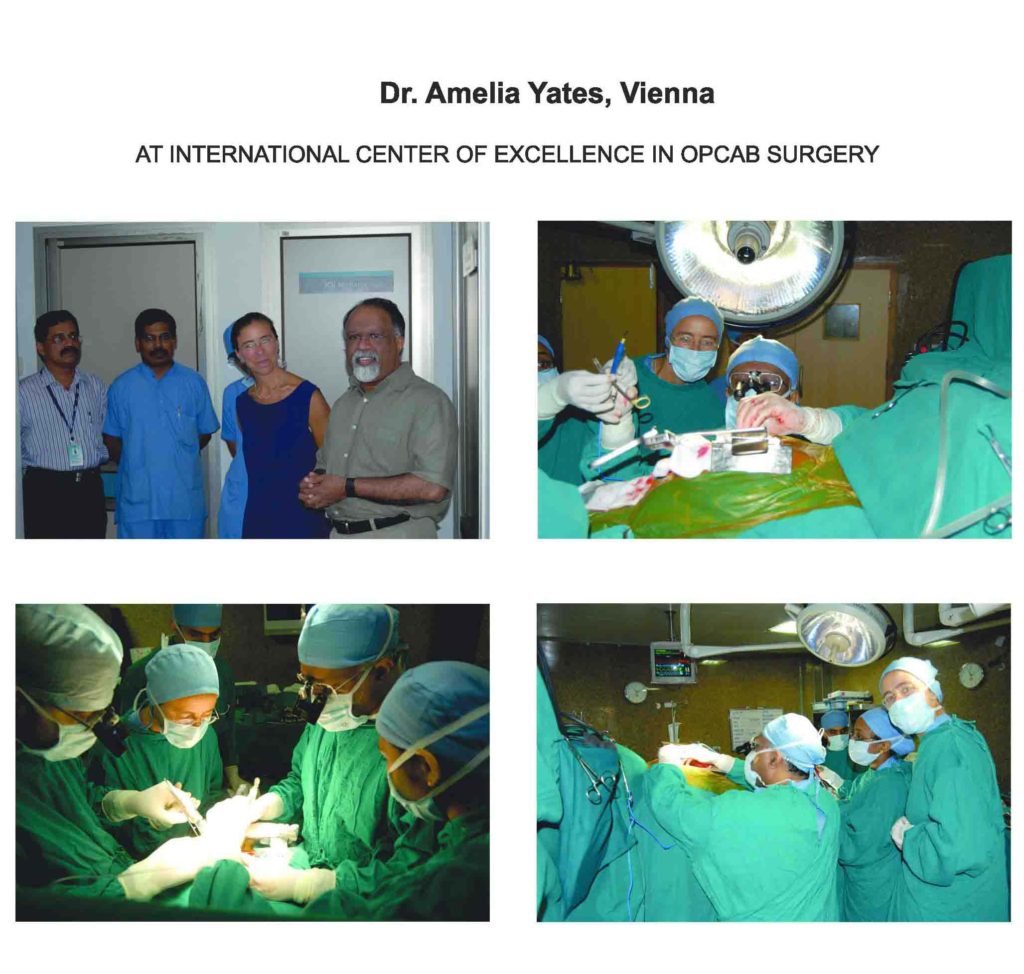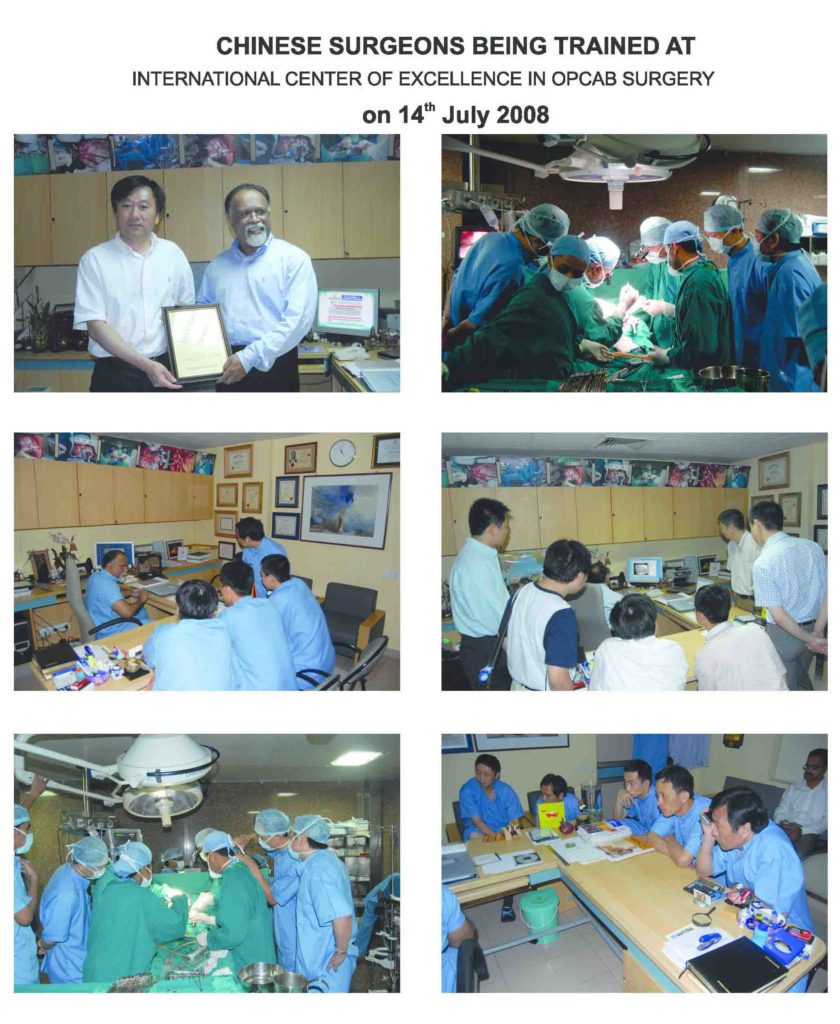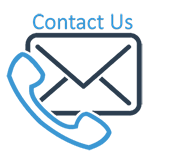We have great pleasure in informing you regarding the developments in beating heart surgery – Off pump coronary artery bypass surgery at INTERNATIONAL CENTER OF EXCELLANCE IN OPCAB , Kozhikode,
Though this cutting edge technology has a steep learning curve, in the last fourteen years we have been able to avoid conversion on to pump in nearly one hundred percent of the patients who underwent Coronary artery bypass surgery.
This was possible only with team work and the mind set of the whole team to gear up to develop this technology and work on developing newer strategies, fabricating devices and equipments to help in performing these procedures in all patients who needed CABG. Performing OPCAB in patients with multivessel disease was a problem ten years ago. When the heart is lifted and tilted up (verticalization of the heart), then hemodynamics gets compromised. This happens as the right atrium gets compressed by the pericardium on the right side, there by reducing the preload to the heart. Opening both the pleura and cutting the pericardium down to the IVC relieved this. This helped in performing distal anastamosis of all lateral and inferior wall coronary arteries.
Then came the problem of maintaining hemodynamic stability during surgery. This was earlier maintained by resorting to trendelenburg position to increase the preload and then using ionotropes if pressure came down. But, since the last four years we did not have to use ionotropes in any patient to maintain hemodynamics, even in patients with low ejection fraction. Hemodynamics was in fact maintained by using bolus doses of Atropine and not pacing as we used to do before. Anti-trendelenburg position was used to decrease the pulmonary artery pressure and in turn the left ventricular end diastolic pressure.
In patients with all types of acute coronary syndrome, and even in ST Myocardial infarction patients, we are able perform this OPCAB procedure with excellent results.
Hemodynamics is maintained in these patients by using IABP (intra aortic balloon pump) during the procedure and then removed after the distal grafting is complete, so that the complication of IABP could be avoided. The main difference in the use of IABP is that ionotropes have been not been used here, and IABP is used mainly to maintain hemodynamics, whilst the heart is being tilted for grafting especially in patients with unstable angina.
Another major disadvantage was the use of side clamp for performing proximal anastamosis in plaquey aortas even in off pump. This was the cause of the increased incidence of stroke that still existed in many OPCAB centers where only side clamps were used. This was avoided in our series by using the “Vettaths anastamotic Obturator” that we had developed and had been patented recently. With this we could perform top end anastamosis of the vein grafts without using the side clamp. We have performed this in more than 800 of our patients with no stroke in these patients with bad aortas. This is one of our humble contributions to cardiac surgery.
With this development in OPCAB surgery and our results after our audit we have started this international center of excellence in off pump coronary artery bypass surgery since August 2008. The center provides Fellowship Programme for aspiring Cardiac surgeons, who could come over and spend time with us in view to develop this specialty in their own region or country. We have already had surgeons from India and from different parts of the world coming to interact with us in this program.
It has been shown that OPCAB provides excellent results in patients with multi organ problems and in patients with low ejection fraction. But until one is able to perform OPCAB on normal patients, it is not possible to do this procedure on these sick patients. Moreover, the question is, if coronary artery surgery could be performed with excellent result without using the heart lung machine, then why do we have to use it. But to get to that level of expertise we need to get trained in this technique. Hence this is the reason why we have come forward to start this training center so that the surgeons, who are keen on this, could benefit from our experience
